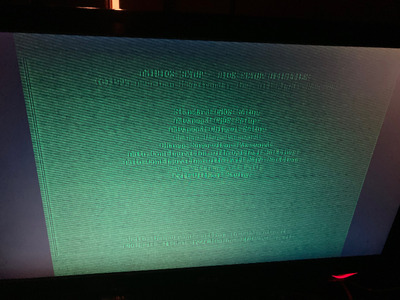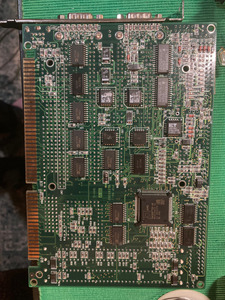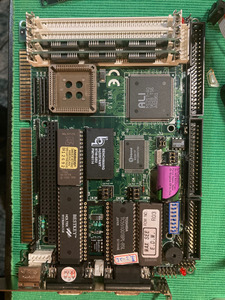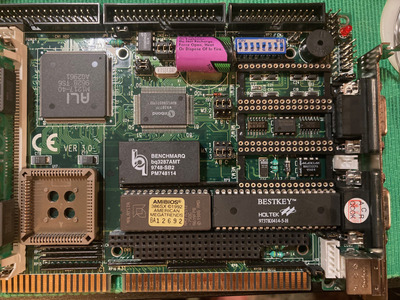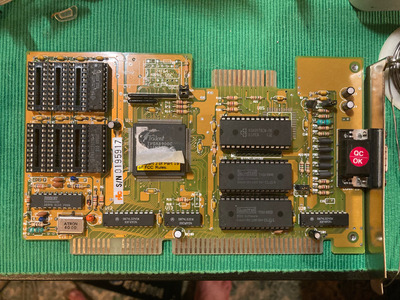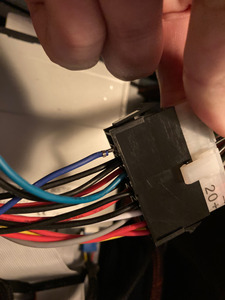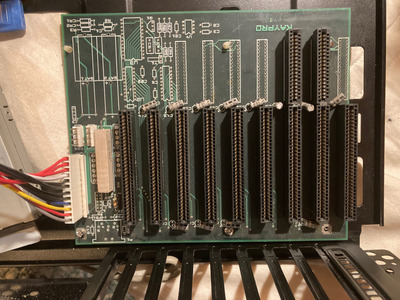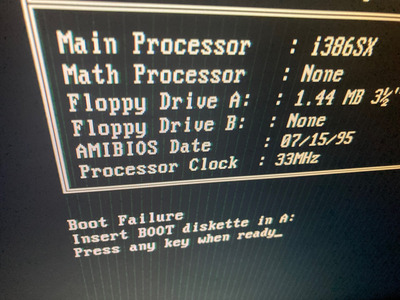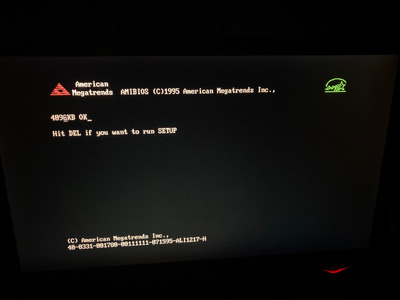First post, by NoTrueSpaceman
I have an unbranded 386 SBC that seems to be functional in every way except for initializing the video.
The board boots, beeps, recognizes my keyboard, allows me to get into the BIOS setup, accesses floppies, and even seems to boot MS-DOS 6.2!
But the video out of my Trident TVGA8900C VGA card is outputs some type of "weak" green signal. It's hard to describe and just barely legible with the brightness cranked. It looks like there's some type of timing issue... or something.
It occurred to me that in all the "successful" boots of this SBC, I never saw the announcement of the VGA BIOS, and I started to think "what if this SBC isn't actually initializing the VGA bios, and this is just whatever garbage mode the card starts up in?"
The VGA card works fine using a 8088 KayPro XT-clone CPU and RAM board. I've had zero problems with it.
My VGA card looks a lot like this one:
http://old.vgamuseum.info/images/stories/palc … 900c_top_hq.jpg
I've attached a picture of the SBC front and back. I had to pull the "MAXSEE EDM" ROM and the TOSHIBA RAM to get it to boot. I also moved the jumpers on M2 to 2-3.
I've also attached a picture of what the video out looks like. You can see wierd timing hash and how it is only green. I've tried running the VGA through a VGA-to-HDMI converter (which will sorta convert MDA in a pinch into something I can display on the monitor) but had the same results. Everything seems to think its a VGA signal.
In the BIOS there is an option to select the video mode: VGA/CGA, EGA something, text something something, mono, absent. None of them work. In fact all of them cause the BIOS to complain and switch it back to VGA. So the BIOS can see the card.
Any ideas?
Any leads on a manual for this card? MAXSEE is a industrial tool manufacturer that makes EDM machines (some type of electro deposit something). All that's relevant there is that this is why the card showed up surplus in the Rust Belt.
• Never pay premium price for things people are throwing away. • Looking for a Sun IPX/IPS/SS-5/etc machine. • https://notruespaceman.com/ •
